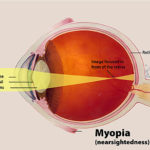A META-ANALYSIS ON OVER 160 THOUSAND PEOPLE SHOWED THAT THIS COMMON REFRACTIVE ERROR COULD DEVELOP MORE EASILY IN THE ABSENCE OF PROPER EXPOSURE TO SUNLIGHT

According to researchers, new genetic discoveries – achieved also thanks to powerful software – point to the hypothesis that refractive errors may be caused by alterations in the molecular cascade “triggered” by light. This means that subjects who are not sufficiently exposed to sunlight – especially in early childhood – are in greater danger of developing myopia. The genetic foundations, of what had already been understood on other grounds, are now clearer.

Source: Nature Genetics, Johannes Gutenberg Universitaet Mainz
[[28.3% of the world’s population is myopic (2010), and the trend is growing. While it is predicted that over one third (33.7%) of the inhabitants of our Planet will be shortsighted by 2020, by 2050 such estimates rise to 50% of the global population. (Fonte: Holden BA, Fricke TR, Wilson DA et al., “Global prevalence of Myopia and High Myopia and temporal trends from 2000 through 2050”, Ophthalmology Vol 123, Number 5 May 2016).]]






